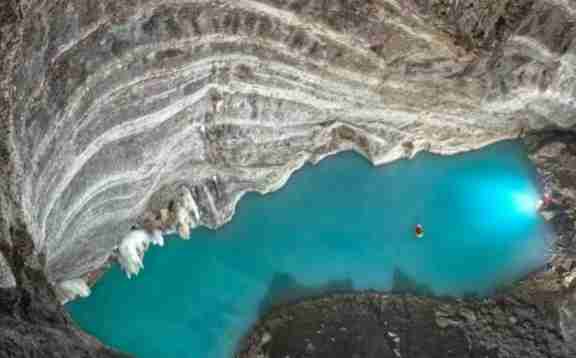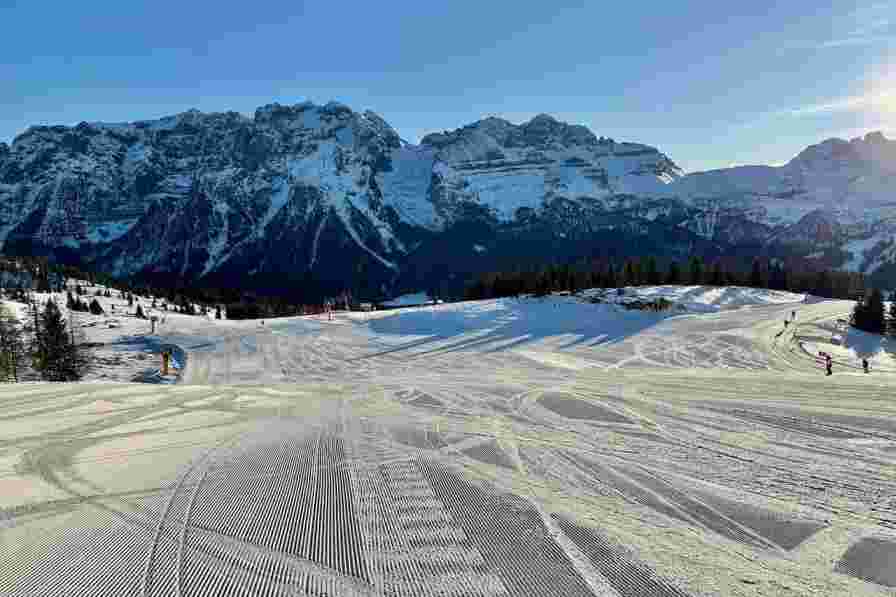A team of Czech scientists has uncovered the world’s largest underground thermal lake in Albania, as reported by Czech media.
This breakthrough followed years of exploration led by Czech speleologist Marek Audy, who had long suspected the presence of a hidden thermal cave system in the southern Vromoner region of Albania, according to Radio Prague.

While mapping the area near the Greek border and monitoring steam from several heated springs, the scientists discovered a 100-meter-deep (328-foot) abyss. At the bottom, they found a lake measuring 138 meters (452 feet) in length and 42 meters (137 feet) in width.
With a circumference of 345 meters (1,131 feet), the lake holds roughly three times the water volume of the main hall of Prague’s National Theater.
Scientists believe this discovery will help in understanding the connection between the underground lake and the surrounding hot springs, with water from the lake feeding these springs.
“We hope this finding will contribute to better understanding the hydrology of the area and aid in its protection, as no one has been able to explain how these underground waters are linked to the surface,” said team member Richard Bouda, a photographer and speleologist, speaking to Radio Prague.
Technology and Mapping Used in the Discovery
The mapping process and the discovery of the lake were made possible with advanced technical equipment provided by the Neuron Foundation. The thermal springs are located near the village of Kuqes in the Leskovik municipality, in the Sarandaporos Valley, a tributary of the Vjosa River, 430 meters above sea level. These springs emerge at the base of a rock formation, with temperatures between 40°C and 50°C, and contain sulfur compounds. They are scientifically valuable and offer therapeutic and touristic potential, accessible via the Leskovik-Kuqes rural road.
The Czech scientific funding organization contributed nearly one million Czech crowns for the expedition, provided by private sponsors, and the underground lake in Albania has been officially named Neuron in honor of the foundation.
Richard Bouda Reflects on the Discovery Process
Describing the discovery, Richard Bouda shared:
“During the initial exploration, we created a basic map using available equipment. We immediately realized we had uncovered something extraordinary. Thanks to the Neuron Foundation, we were able to obtain a mobile LIDAR scanner, which allowed us to accurately measure the cave and lake area. We also plan to collaborate with hydrologists to measure the lake’s underwater section using sonar technology.”
The Czech team employed advanced technology, including GeoSlam, a 3D scanning method that produced precise models of the cave system.
An Uncommon Geological Formation
The process that formed the cave with the lake is also quite unique. The mineral water in the lake is saturated with hydrogen sulfide, which, when exposed to air, oxidizes into sulfuric acid. This acid continually dissolves the limestone, converting it into soft gypsum and creating new underground spaces.
Future Research and Hydrological Implications
The Czech team’s research will enhance understanding of this rare cave formation, with more studies planned. Richard Bouda explains:
“With the help of our scientific partners, we now know that the surrounding springs draw water from the lake. We believe this discovery will not only shed light on the hydrology of the region but also help in its conservation, as the exact relationship between these underground waters and the surface remains unclear.”


